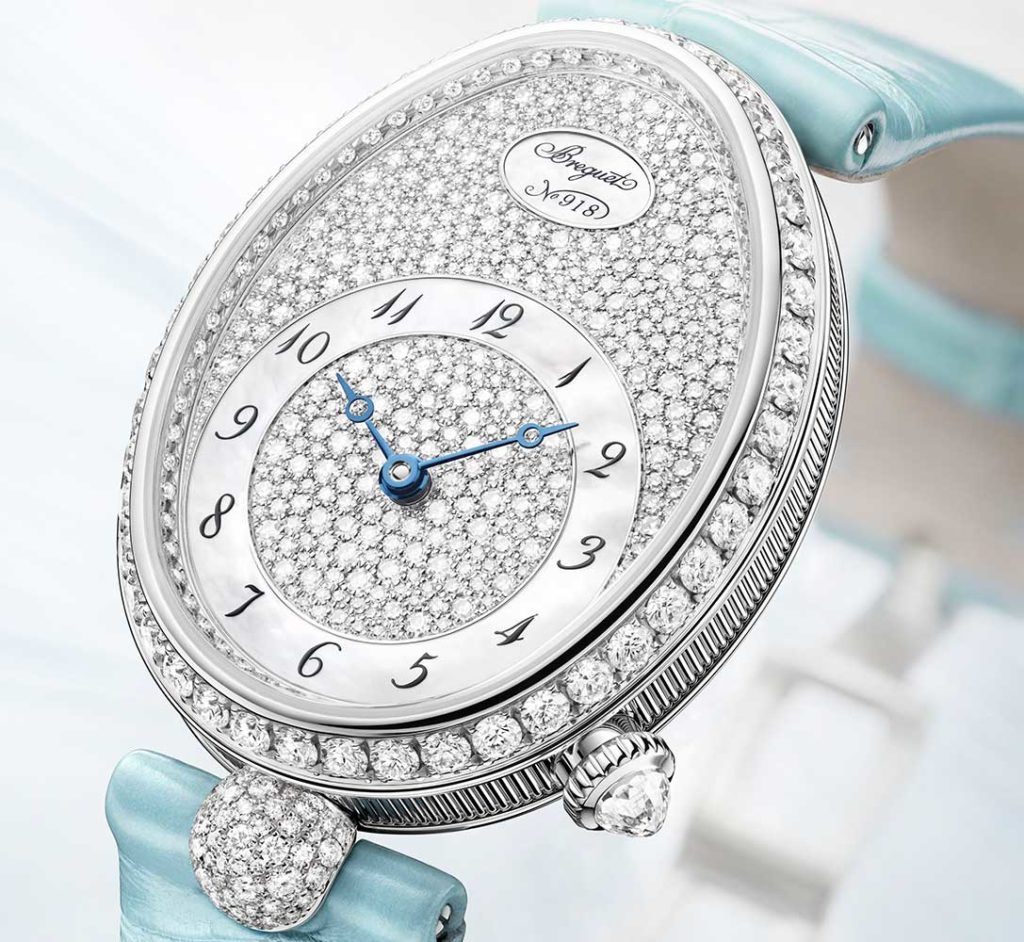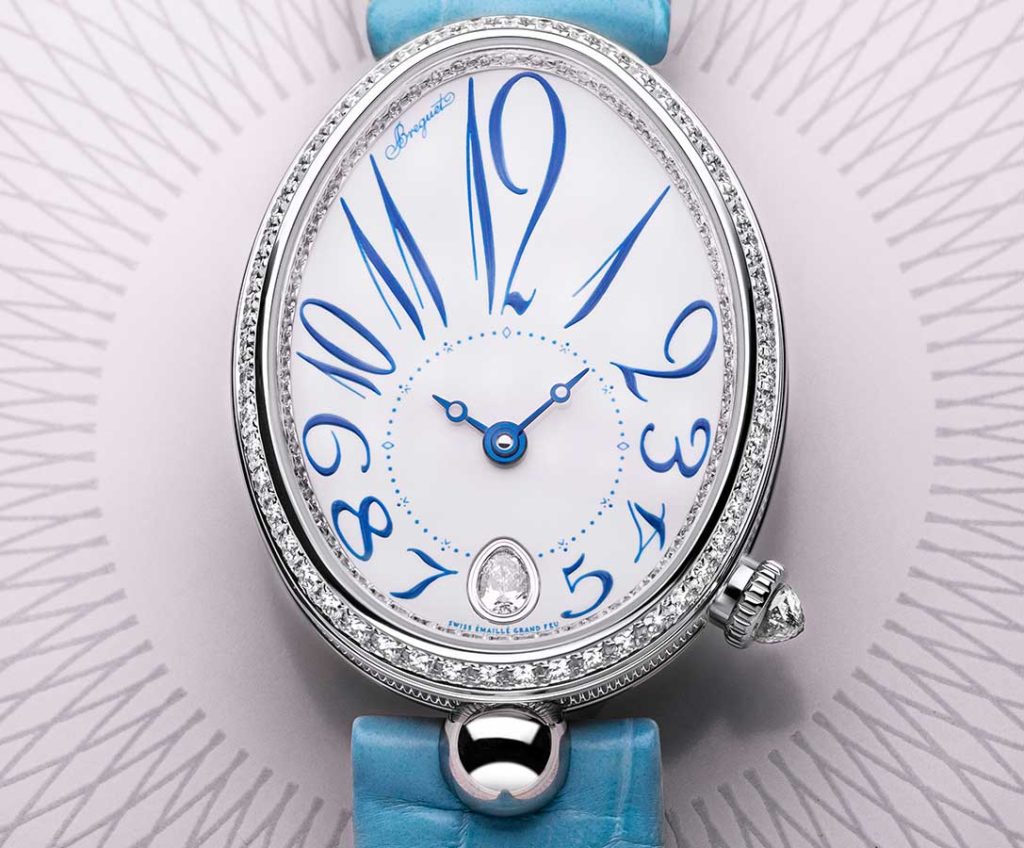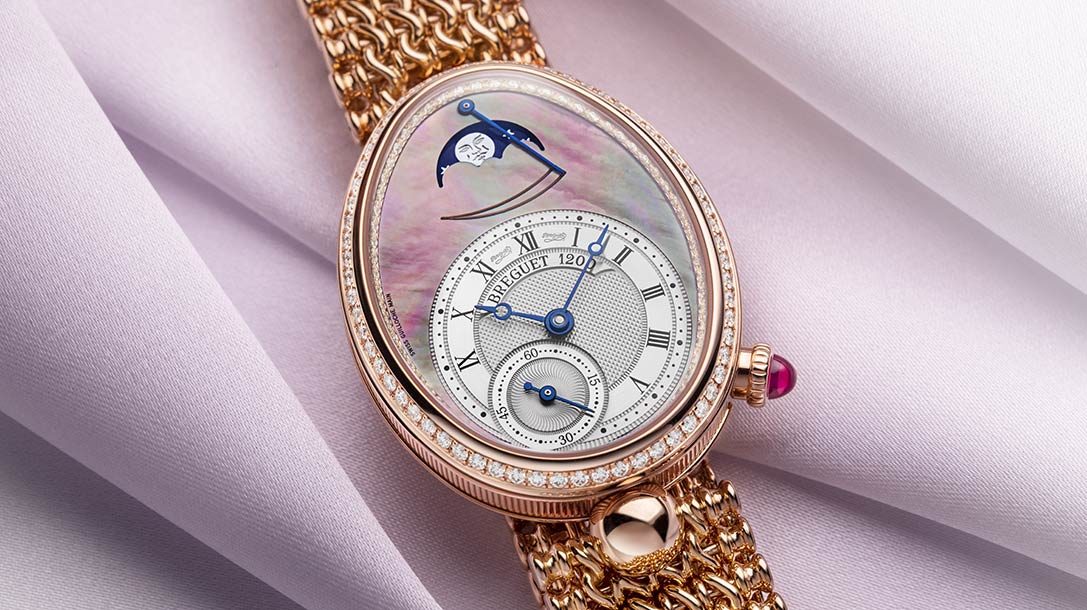
While its roots lie in the rich heritage of the company founded in 1775, which includes some of the greatest advances in modern watchmaking such as the eponymous balance-spring, the pare-chute and the tourbillon, to name but a few, the Reine de Naples is essentially based on an interpretation of the first wristwatch developed by Abraham-Louis Breguet (1747-1823) at the request of Caroline Murat née Bonaparte (1782-1839) between 1810 and 1812. Its unique oval silhouette, in a landscape populated by round models where square, rectangular or even tonneau shapes are rare, makes it an atypical, furiously feminine timepiece, but also a blank canvas on which to affix aesthetic savoir-faire, also initiated in the 18th century by the ingenious watchmaker.
Bucking the ornamental trends of the time, which resulted in timepieces saturated with decoration, Abraham-Louis Breguet focused on the watch’s primary function: to display time clearly, freeing cases and dials from all embellishment. This philosophy of purity, this design based on the essential, is a driving force that still fuels the watchmaking brand, without however neglecting artistic craftsmanship, as evidenced by certain models in the Reine de Naples collection, and often hemmed with precious stones. Guilloché is one of Breguet’s main signatures, and the Manufacture’s craftsmen work on the dials using several motifs – Clous de Paris, colimaçon, checkerboard – to delimit the reading zones, as on the 8998 Day/Night reference, the 8968 and 8908, on a gold disc or, in the case of the 8965, in mother-of-pearl. Moreover, this natural material with its iridescent reflections is often used by Breguet in this product family, in applied surfaces to cover all or part of the watch face (8918, 8925, 8928, 8908, 8909, , 8939, 8978) or in marquetry (9807, 9808, 9818). The company also distinguished itself with cameo shell work on a spectacular piece, the Reine de Naples 8958, a few years ago.

